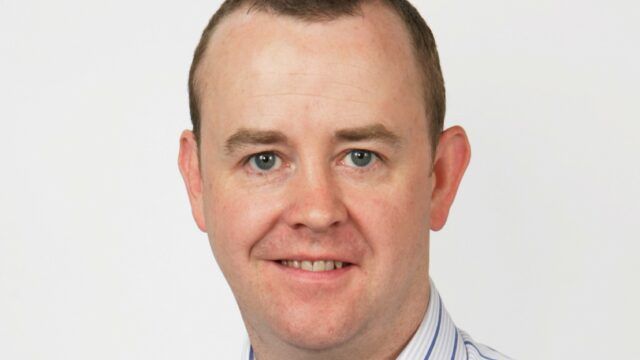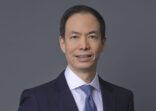
Global high yield corporate bonds have not been spared the rout afflicting other asset classes amid the confusion and uncertainty unleashed by President Trump’s tariff announcements.
Last week saw the worst sell-off in US sub-investment grade bonds since March 2020 at the start of the coronavirus pandemic, the Bloomberg Global High Yield Corporate index showed, as fixed income investors worried about the effect of the tariffs on less credit-worthy corporate borrowers.
The sharp spread widening followed a long period of optimism among investors in high yield fixed income, and a strong performance by the sector.
The yield premium over US Treasuries fell from about 600 basis points (bps) in July 2022 to around 200bps at the beginning of April. Investors had ignored the historically narrow spreads for the attraction of high absolute yields in the search for income.
In this current volatile and fearful environment, FSA asked Darius McDermott (pictured), managing director of Chelsea Financial Services, to compare two global high yield bond funds, and he selected the Man High Yield Opportunities fund and the T. Rowe Price Global High Yield Bond fund.
| Man | TRP | |
| Size | $3.34bn | $40m |
| Inception | 2019 | 2001 |
| Managers | Michael Scott | Michael Della Vedova, Rodney Rayburn |
| Three-year cumulative return | 19.43% | 8.80% |
| Three-year annualized return | 6.40% | 3.27% |
| Three-year annualised volatility | 5.09% | 7.48% |
| Three-year information ratio | 0.87 | -0.02 |
| FE Crown fund rating | * | ** |
| Morningstar rating | ***** | *** |
| Morningstar medal | – | bronze |
| OCF | 1.57% | 1.28% |
Investment approach
The managers of the Man High Yield Opportunities fund and the T. Rowe Price Global High Yield Bond fund are both bottom-up stock pickers, but there are subtle differences within each portfolio, according to McDermott.
Mike Scott, manager of the Man High Yield Opportunities strategy, is a stock picker, but he assesses each idea through a top-down lens. “In practice, this means he finds interesting opportunities first, then sees what macroeconomic trends would help or hurt them,” said McDermott.
Scott’s investment universe starts with around 1,500 names. This is initially reduced through a series of quantitative metrics to find attractively priced ideas. From this list, Scott conducts a more thorough analysis, building a watchlist of securities with good fundamentals on an individual basis and macro tailwinds to support a recovery in price. This also entails analysis of the wider credit environment.
The final portfolio consists of 130-180 names, based on the strength of their fundamentals.
“These positions will be weighted depending on how compelling the opportunity set is with reference to which sector or country they are in, the liquidity, the seniority of the debt and what difference each idea will make to the rest of the portfolio,” said McDermott.
“Scott does not want to be concentrated into one area or be exposed to one factor. Instead, he wants a diverse range of ideas to enable a portfolio that can benefit in all environments,” he added.
The typical holding period is around one year, so positions can turn around quickly, especially in the more opportunistic trades, which gives an overall portfolio turnover of around 75-80%. The fund will be at least 80% hedged back to sterling.
The T. Rowe Price Global High Yield Bond fund targets improving issuers by looking at various characteristics such as credit statistics, free cash flow generation, strategic value of a company, security structure and quality of the management team.
“Managers Mike Della Vedova and Rodney Rayburn use tactical regional allocations to exploit different market environments (and credit cycles) to profit from both dispersion and volatility between regions,” said McDermott.
The fund has a focus on BB/B securities, with a smaller allocation to lower-quality bonds when valuations look particularly attractive. The fund is more diversified in terms of holdings with around 250-350 issuers, while industry exposure typically ranges between plus or minus three percent around the benchmark weight. Individual BB issuers can account for up to 3% of the portfolio (2% for B and 1% for CCC), according to the most recent fund fact sheet.
“However, there are a number of other notable differences between the two funds,” said McDermott.
First, the T. Rowe Price fund probably has a greater focus on emerging markets, although the majority is currently held in US high yield at present. In contrast, the Man fund targets a wide range of global opportunities, albeit with a natural preference for UK, North American and European markets,” he said.
Both funds currently have most of their assets in BB/B bonds, and both have their largest exposure to financials
“The T. Rowe Price fund also has a greater ESG focus, in our view, with a particular consideration given to those factors most likely to have a material impact on the performance of the holdings,” McDermott said.
“Essentially, this is one of several drivers behind the investment analysis.”
Fund characteristics
Sector allocation:
| Man | weighting | TRP | weighting |
| Financials | 24.1% | Financials | 15.3% |
| Consumer discretionary | 9.0% | Energy | 13.9% |
| Industrials | 8.8% | Healthcare | 9.6% |
| Healthcare | 8.2% | Services | 7.1% |
| Communications | 7.4% | Cable | 6.6% |
| Energy | 5.9% | IT | 6.2% |
| Consumer staples | 5.6% | Leisure | 4.7% |
| Real estate | 5.5% | Media | 4.3% |
| Materials | 2.2% | Chemicals | 3.7% |
| Utilities | 2.1% | Autos | 3.2% |
| IT | 1.5% | Utilities | 3.1% |
| Telcos | 2.5% | ||
| Building products | 2.0% | ||
| Defence | 2.0% | ||
| Metals & mining | 1.9% |
Credit rating breakdown:
| Man | TRP | |
| A | -0.5% | – |
| BBB | 6.2% | 1.4% |
| BB | 32.0% | 44.3% |
| B | 32.2% | 35.3% |
| CCC | 9.8% | 14.6% |
| CC | 1.6% | 0.9% |
| Not rated | 0.2% | 2.1% |
Top 5 Holdings:
| Man | weighting | TRP | weighting |
| RLGH Finance Bermuda | 2.37% | Panther Escrow Issuer | 1.66% |
| Prime Healthcare Services | 2.19% | Cloud Software | 1.31% |
| Bellis Acquisition | 2.11% | CCO Holdings LLC | 1.11% |
| Jerrold Finco | 2.04% | Onemain Finance | 0.98% |
| Vivion Investments | 1.78% | UKG Inc | 0.97% |
Performance

The Man fund has generated a three-year cumulative return of 19.43%, with annualised volatility of 5.09%, according to FE fundinfo.
During the same period, the T. Rowe Price strategy achieved a lower cumulative return of 8.80%, and annualised volatility of 7.48%, FE fundinfo data shows.
“Both of these are very much bottom-up, stock-pickers’ portfolios to a certain degree,” said McDermott.
“One would probably expect performance to be smoother on the T. Rowe Price fund given it has a significantly larger number of holdings,” he said.
This is reflected in the numbers, with the fund producing a positive return in five of the past six calendar years (2019-2024), with the only outlier being 2022, when the fund fell 12.49%, according to FE fundinfo.
“In contrast, the performance of the Man fund has seen calendar year returns hit double digits on numerous occasions, indicating that it takes a higher-conviction approach,” said McDermott.
Discrete calendar year performance
| YTD* | 2024 | 2023 | 2022 | 2021 | 2020 | |
| Man | 0.73% | 12.68% | 12.23% | -9.47% | 10.86% | – |
| TRP | -1.35% | 5.90% | 12.75% | -12.49% | 4.46% | 3.88% |
| Sector | -1.24% | 7.08% | 10.30% | -12.35% | 2.35% | 4.03% |
Manager review
Man Group and T. Rowe Price are both large, global asset managers with substantial teams of analysts backing them.
Mike Scott, portfolio manager of the Man Group and the High Yield Opportunities fund, began his career at Cazenove Capital Management in 2005 and moved to Schroders in 2006, where he spent four years as a European industrials credit analyst before becoming the lead high-yield portfolio manager, according to McDermott.
Scott graduated from the University of Oxford and is a CFA Charterholder.
Mike Della Vedova is a global high yield portfolio manager in the fixed income division at T. Rowe Price. He is a portfolio manager of the Europe High Yield bond strategy and co-portfolio manager for the Global High Yield and Global High Income Bond strategies.
“Mike’s investment experience began in 1994, and he has been with T. Rowe Price since 2009, beginning in the fixed income division,” said McDermott.
Prior to this, Vedova was co-founder and partner of Four Quarter Capital, a credit hedge fund focusing on sub-investment grade European corporate debt. He was also employed by Muzinich & Company as a senior analyst and assistant portfolio manager in London.
Rodney Rayburn is a portfolio manager in the fixed income division, managing the credit opportunities and high yield bond strategies.
Fees
The T. Rowe Price fund has an ongoing charge of 1.28%, while the Man fund has a higher fee of 1.57%, according to FE fundinfo.
Conclusion
Man High Yield Opportunities fund manager Scott has a “go anywhere” approach and looks for mispriced opportunities from across the speculative end of the market.
“He buys bonds he thinks are too cheap, and shorts some he thinks are too expensive, enabling him to profit when the price falls,” said McDermott
The T. Rowe Price Global High Yield Bond fund is a bottom-up portfolio designed to capture enhanced returns from a diversified global portfolio of high yielding securities from around the world, including emerging markets.
“The T. Rowe Price fund has produced solid, consistent returns during the past five years, but it is hard to go against the stock picking skills of Scott on this occasion,” said McDermott.
“Scott’s experience and the fund’s flexibility allows him to find opportunities others may miss or avoid,” he said, and the “concentrated portfolio offers a different, but attractive, return profile to his competitors, aided by his strong track record”.
It is a solid option for investors looking for solutions in the bond market, and Scott has shown an ability to take short positions, which has also contributed to returns, noted McDermott.

















